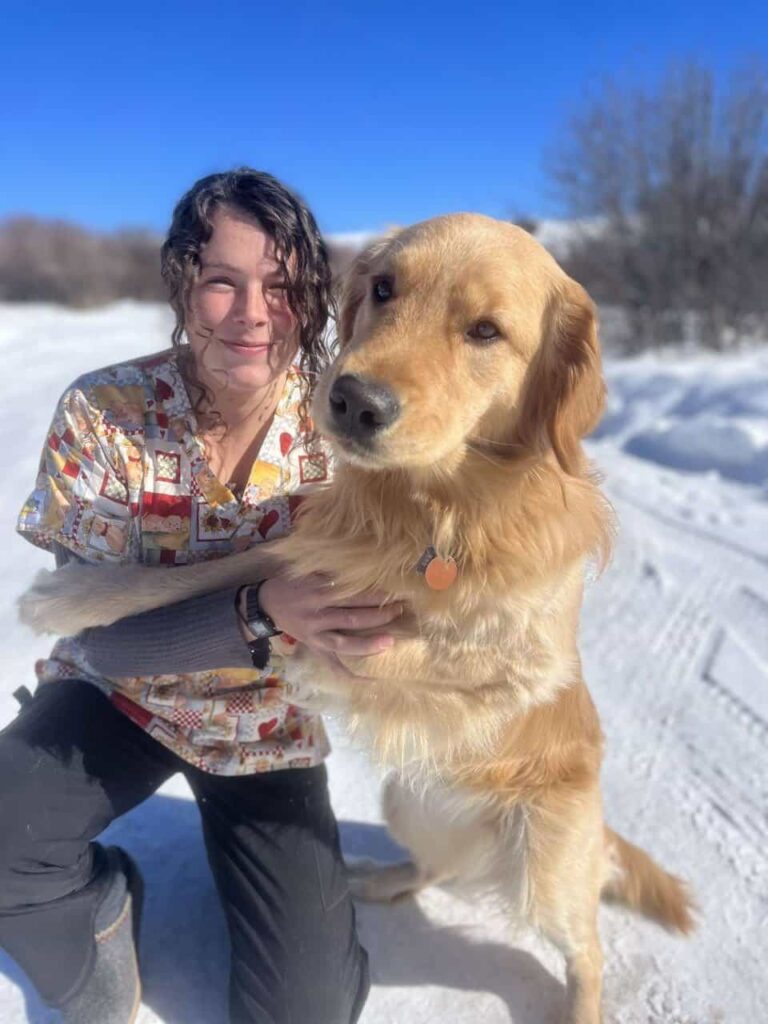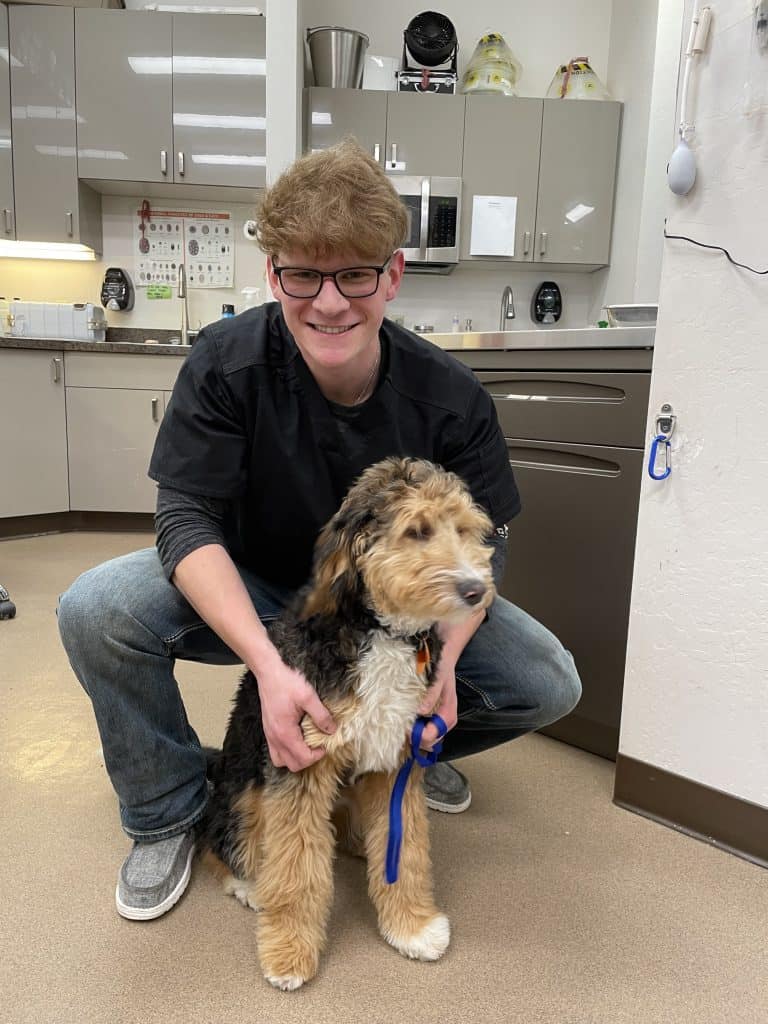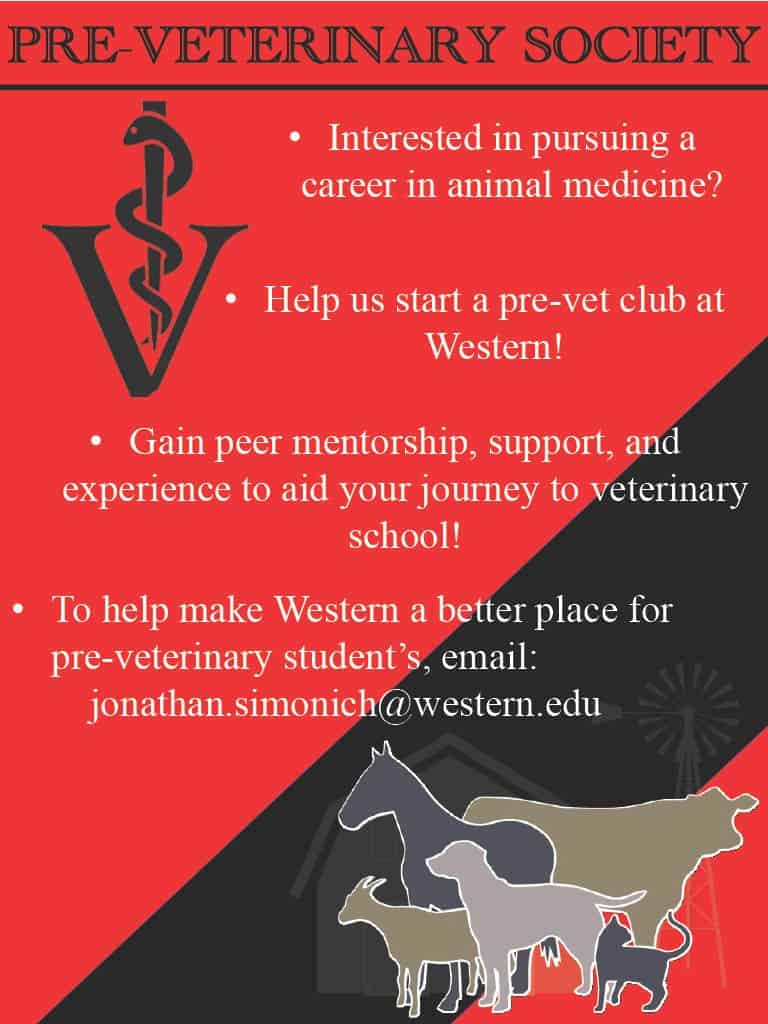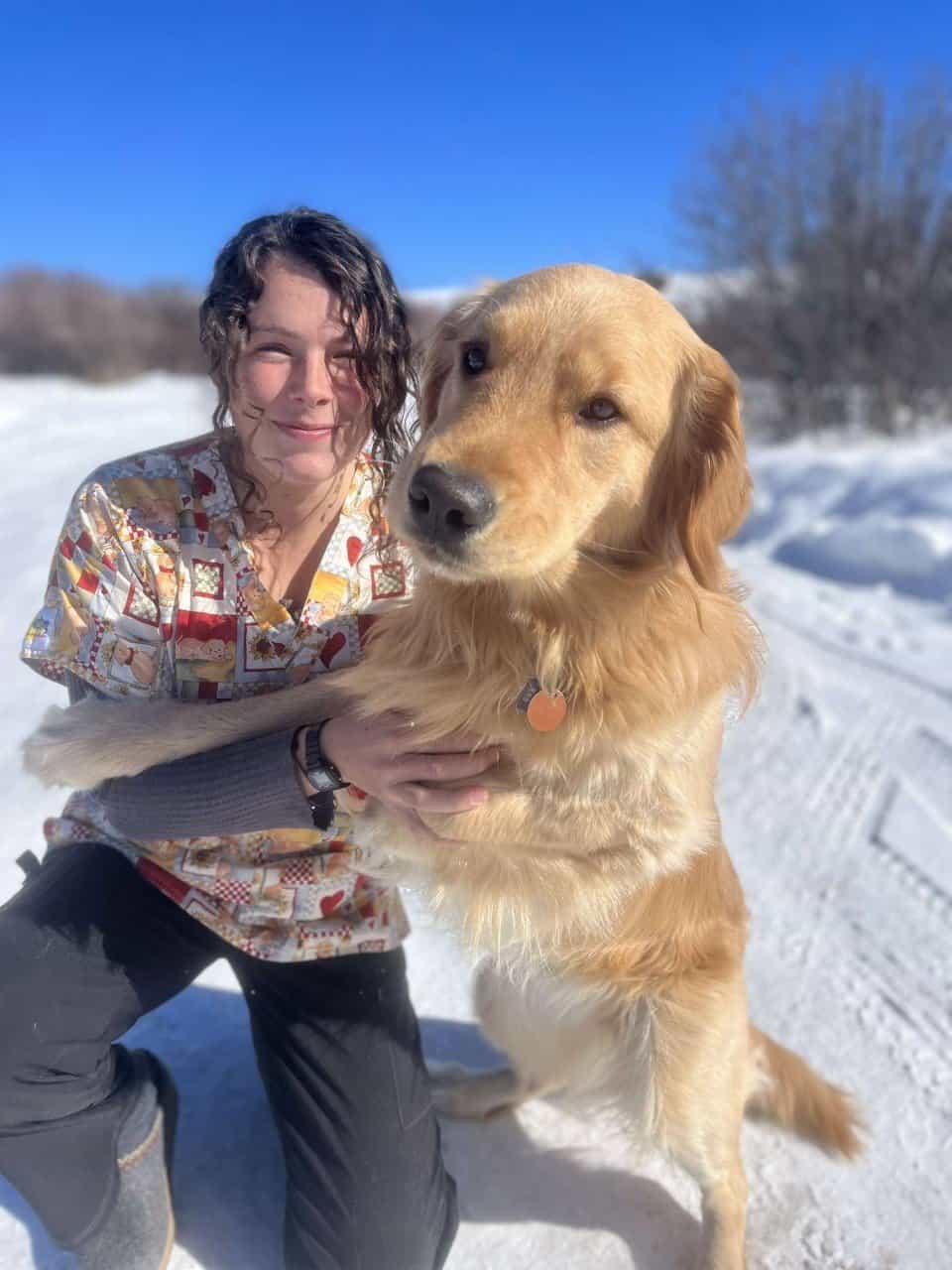
“I grew up ranching — I grew up living the ranch hand lifestyle. My dad convinced me to go to college and pursue human medicine, but I wasn’t quite interested in that. I thought ‘well I’ve been a ranch hand my entire life — I’ve been around cows, horses, dogs, and cats my whole life and I love being around them, so why don’t I just pursue a career in vet med because I’d be [happier] being with animals,”’ says Jon Simonich, a sophomore at Western studying biology with the aim of going on to veterinary school.
While working through his studies at Western, Simonich spotted a gap for students considering a career in veterinary medicine.
Undergraduate students applying to vet schools are usually encouraged to join collegiate pre-vet organizations and programs. Due to its smaller size, Western doesn’t have a pre-vet major or designated track (although there is a pre-health advising program and associated club, the requirements and process are significantly different).
Simonich took the initiative to form a new club — the Pre-Veterinary Society — that could help light the path towards veterinary school admission for interested students.
“The thought occurred to me to just start a pre-vet club so that we could help freshmen, sophomores, and anyone else looking for the prerequisite and course list — and for any information pertaining to actually getting into veterinary school,” says Simonich, adding: “It’s a long search process.”
In his efforts to jumpstart the new club, Simonich is joined by Laura Hanks, a junior biology student with a family legacy of veterinary practice.
“My great grandpa was a vet in Pueblo, and my grandpa is a vet currently in the Gunnison Valley, so I grew up playing in the kennels and always having animals around. Whenever I got hurt, I went to my grandpa’s operating table to get stitched up, so [becoming a veterinarian] has always felt like my calling,” relays Hanks.

Future veterinarians of Western
The nascent club’s early recruiting efforts have attracted a group of eight committed prospective veterinary students, including one student who has already attained admission, and another who is currently waitlisted and awaiting a final decision.
Simonich stresses that the club is open to everyone – from freshmen simply curious about the prospect of veterinary school, all the way to seniors who’ve already been accepted.
“It’s a great way to meet other people, it’s a great way to improve Western for other students, and [it could] possibly get more students to come to Western who are interested in veterinary medicine,” he adds.
The new group plans to host a number of speakers, including current or former students who have successfully attained admission into veterinary school.
Simonich adds that another key function of the club will be coordinating volunteer, internship, and shadowing opportunities in veterinary medicine and animal care for members to strengthen their applications for veterinary school. Those opportunities will give students the chance to test the proverbial waters of the profession before fully diving in.
For the spring semester, the Pre-Veterinary Society plans to meet on the first and third Wednesdays of the month at 7 p.m. in Hurst Hall.

The veterinary school landscape
Admission to one of the United State’s 32 accredited veterinary schools is highly competitive — there are only about 2,700 spots available annually across the country, and the average admission rate hovers in the 10 to 15 percent range from year to year.
The requirements for admission to veterinary school vary significantly from college to college, but generally include several semesters of coursework in general chemistry, organic chemistry, biology, and physics, as well as a series of classes in mathematics, biochemistry or molecular biology, and, sometimes, genetics.
Additionally, prospective veterinary students are sometimes required to submit scores from the Graduate Record Examination, (GRE) a standardized test used for admissions to many different types of graduate schools. Notably, this requirement is being phased out by many schools.
Vet schools are also on the lookout for well-rounded students with broader academic backgrounds, and put a heavy preference on experience with animals, which can come in many different forms.
Often, veterinary school applicants will have a background in 4H, Future Farmers of America, and other similar animal-based leadership, research, and development programs.
Putting in the hours
Many veterinary schools (depending on state) have minimum hours requirements for veterinary experience before students can even be considered for admission, ranging from a couple hundred hours to north of 500.
In practice, many admitted students log more than 1,000 experience hours before applying — and some may log more than 2,000 hours in achieving admission to a top-tier veterinary school like UC-Davis.
Depending on the veterinary school, students can count not only hours spent under the supervision of a veterinarian, but also time performing animal care and participating in animal research.
To meet his hours requirement and bolster his future applications, Simonich is volunteering at Gunnison Valley Vet Clinic. He’s planning to link up interested Pre-Veterinary Society students with the clinic to help them gain similar experience to add to their growing résumés.
Hanks is working towards her hours in a support role with Critter Sitters and Gunnison Vet Clinic, which provides veterinary care, pet boarding, and dog grooming services.
At the clinic, Hanks works under the supervision of Dr. Bailey Randlett, a Western alum who graduated from veterinary school last June. Dr. Randlett has proved a helpful mentor for Hanks in strategically navigating the process of preparing for veterinary school, and the trying admissions process.
CSU: The dream school
Colorado State University in Fort Collins is the state’s only accredited vet school, and the first choice for both Simonich and Hanks.
CSU is considered an elite vet school with a #3 national ranking with 28 different veterinary specialties, as well as one of the largest research programs of any veterinary college in the world.
Last October, CSU announced a massive $270 million expansion that is slated to be completed before the Fall 2026 semester begins.
The school’s admissions rate sat at just six percent in 2021, but admissions are heavily weighted to favor in-state applicants. For the class of 2021, CSU admitted 34 percent of Colorado applicants, but just over two percent of applicants from out-of-state.
Typically, veterinary schools select half or more of their incoming classes from in-state applicants.
The challenge of gaining admission into veterinary schools leads some prospective students to seek schooling options outside the U.S., including in the Caribbean and other parts of Latin America.
“A lot of times they’re cheaper, and once you get your doctorate that transfers anywhere in the world,” says Hanks, who in addition to CSU is also considering veterinary school options in Puerto Rico and Costa Rica.
Looking ahead
After he completes veterinary school, Simonich, who is looking to specialize in equine and bovine care, intends to take over his father’s medical office in Pueblo.
His father has made plans to convert the space into a veterinary clinic when he retires, and Simonich is hoping to join forces with Dr. Bryan McDonald, a Pueblo veterinarian that he has shadowed for, to create a clinic that can provide services to both small and large animals.
After she graduates, Hanks is looking to specialize in wildlife medicine to gain valuable experience out of veterinary school. Later on, she foresees settling down into small animal practice, which she hopes to run out of her own homestead one day.
In the more immediate future, Simonich and Hanks are awaiting final approval from Western’s Inter Club Council (ICC) to officially become a university-sanctioned organization.
Down the line, the pair would like the Pre-Veterinary Society to join with a larger organization that can provide greater resources, such as the American Pre-Veterinary Medical Association, a national group for pre-veterinary students which includes dozens of official campus chapters.
The group will be advised by Dr. Cassandra Osborne, a biology professor who has helped students meet the course requirements for veterinary school admission in the past.
For students interested in learning more or becoming involved with the club, you can email Jon at Jonathan.Simonich@western.edu.
The Pre-Veterinary Society plans to meet on the first and third Wednesdays of the month at 7 p.m. in Hurst Hall.

